AI is revolutionizing the way people search and how content gets found.
Simply ranking on Google’s classic list of blue links is no longer enough. With popular AI-powered search engines like Perplexity, Google’s AI Overviews, and ChatGPT with browsing, users now get direct answers, not just a list of results.
If you want your content to stay visible, optimize for AI-driven search, not just traditional rankings.
In this guide, you’ll learn how to optimize your content for AI search engines, what they reward, and how to adapt your content to stay ahead.
How does your website score? Get a free instant audit that will uncover the biggest SEO issues affecting your site, and how to fix them.
Article Summary
- AI search engines like Perplexity, ChatGPT, and Google SGE now deliver direct answers, not just links
- To stay visible, content must be optimized for real-time citation, not just traditional rankings
- Perplexity favors well-structured, skimmable pages with clear answers, schema markup, and E-E-A-T signals
- Google’s AI Overview selects concise, factual content that answers questions early in each section
- Structured data and topical authority help AI engines parse and trust your pages
- Monitoring referral traffic from AI tools and looking for brand mentions or citations, even without clicks, is critical
- Content should be written in natural language, with headings and subtopics framed like real questions
- The future of SEO means optimizing for how language models scan, summarize, and cite trusted content
What Are AI Search Engines?
So, what exactly is an AI search engine?
It’s a search platform powered by large language models (LLMs) that generate full-text answers to user queries.
Instead of returning a list of links, they read, summarize, and explain, often citing the sources from which they pull information.
This makes the experience feel less like searching and more like talking to an expert who has already read the internet for you.
What AI search engines have in common is contextual understanding, real-time interpretation, and citation transparency.

This visual highlights the shift in search experience. SGE offers a summarized answer with source cards, while the traditional SERP relies on clickable blue links and snippets.
They blur the lines between traditional search engines, answer engines, and AI assistants.
This makes them disruptive.
These tools have created the need for new AI search engine optimization techniques that go far beyond traditional SEO playbooks.
For SEOs, this marks a clear shift in strategy: you’re no longer just optimizing for clicks, you’re also optimizing to be the trusted source behind the answer.
Why AI Search Changes the SEO Game
Generative AI in search is fundamentally shifting user behavior and the rules of SEO, AI search doesn’t just tweak how results are shown.
It transforms how users interact with search and what success looks like for SEOs.
And if you’re wondering, does AI replace traditional SEO? Not quite, but it’s forcing it to evolve fast.
Users now get answers directly from the AI search interface.
If the AI summary satisfies their query on the spot, they don’t have to click through to a site.
Chatbot-style engines like Perplexity and Google SGE can pull insights from your content and display them without a page visit.
That means you might still be providing the value, just without the traffic.
This is already impacting publishers.
News outlets and review sites are seeing organic traffic drop as AI summaries give users the information upfront.
The New York Times’ search traffic share fell to 36.5%, down from 44%, partly due to answers being extracted by AI and shown in the SERP.
In some cases, users don’t scroll past the AI answer at all.
But it’s not all bad news.
Getting cited by an AI model might be as valuable as a click.
Your brand becomes the voice behind the answer, building visibility, trust, and top-of-mind awareness.
If Perplexity cites your blog or Google SGE links to your article in the snapshot, you’ve earned credibility, even if the user never leaves the results page.
Google says its AI-generated summaries are meant to highlight web content, not replace it.
Perplexity has even floated plans to share revenue with publishers when their content is used to answer queries.
So, the game is shifting from pure traffic acquisition to influence within the answer itself.
In the AI era, visibility isn’t just about clicks; it’s about being the source AI trusts to quote.
Want Expert Help?
Explore our SEO services tailored for AI-driven visibility.
How Perplexity AI and Other Tools Work
The best AI search engines retrieve and present information differently, but they follow the same underlying principle: They read the web like humans would, then summarize the findings into direct, conversational answers.
Perplexity AI works by crawling the web in real time and running the results through a large language model.
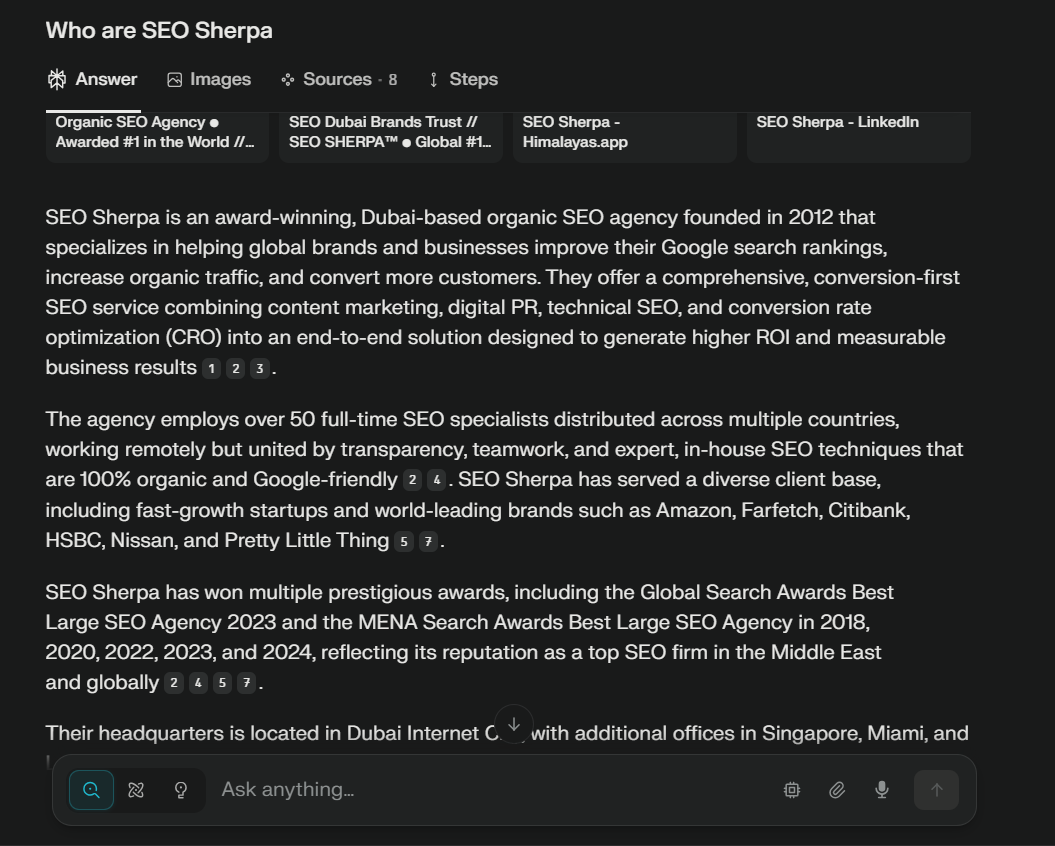
It ranks content, pulls from high-authority sources, and then builds an answer with up-to-date information and linked citations for every fact.
Users see the summary up top, with clickable footnotes for transparency and verification.
This makes Perplexity feel like a curated answer engine; it acts like a researcher citing every source.
It also supports rich media, often embedding images, charts, or videos from referenced pages directly into its results.
Google’s Search Generative Experience (SGE) operates on the same core idea.
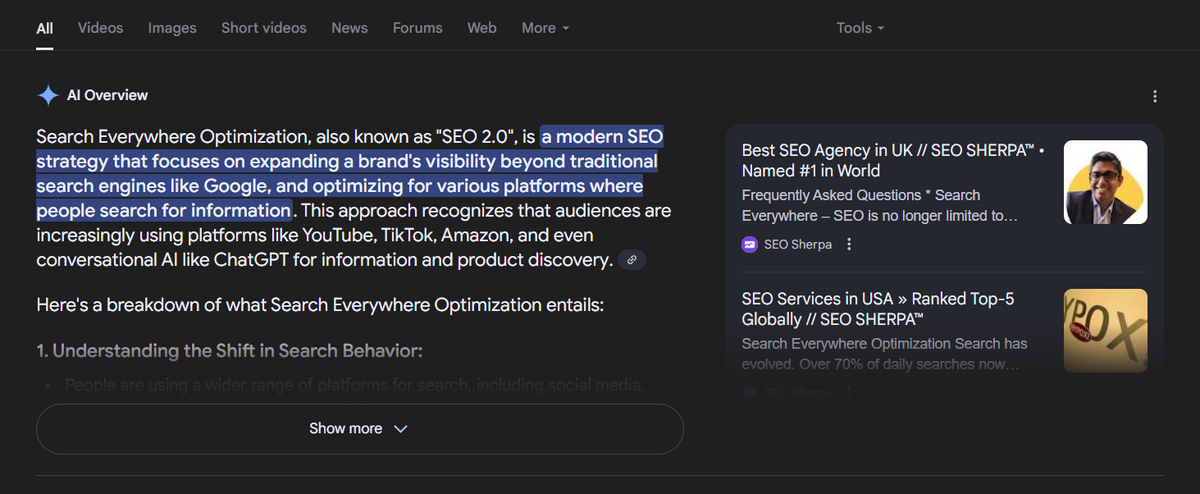
It pulls from top-ranking websites, extracts key points, and combines them into a summary at the top of the SERP.
Sometimes, it links back to sources directly. Sometimes, it just references them with an icon or expandable menu.
Bing Chat, powered by GPT-4, also leans heavily on this blend of search + conversation.
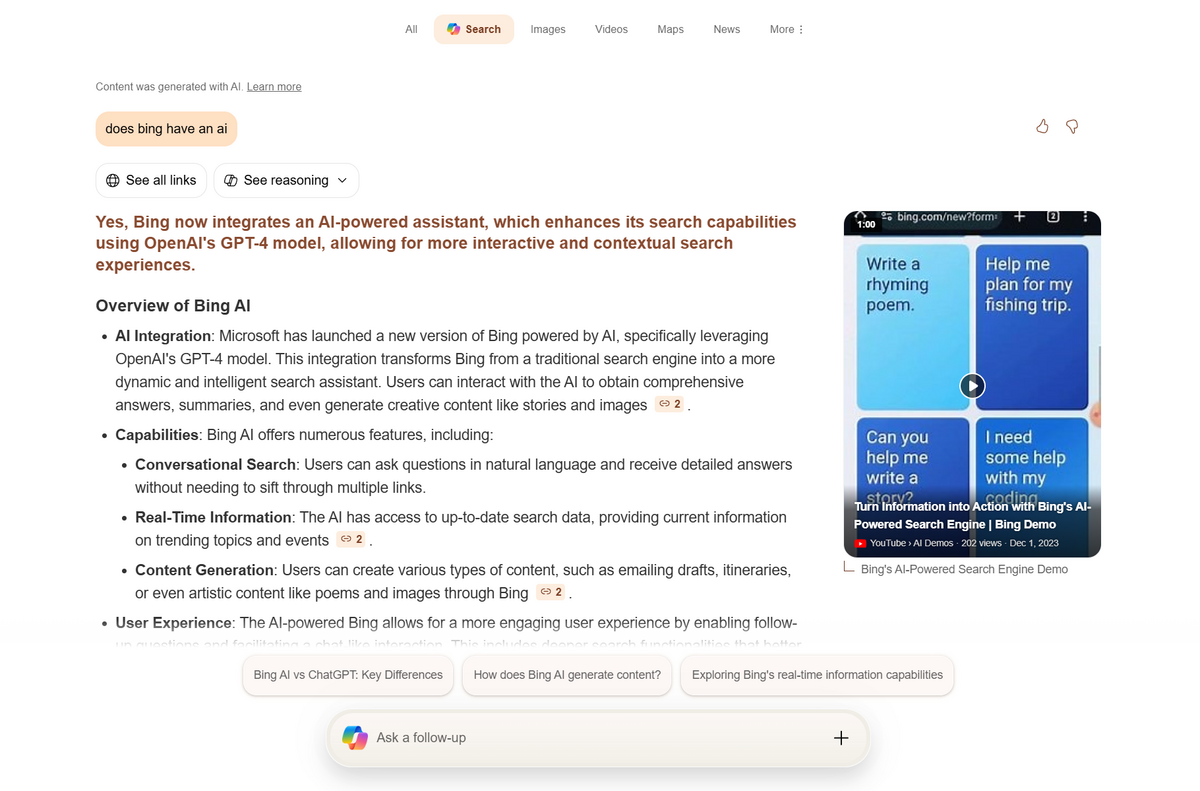
It reads top Bing results, forms an answer, and provides footnotes that link to the original pages.
Even ChatGPT with browsing is in the mix now.
It fetches real-time information from the open web, then responds with links and citations baked into the reply.
However, not all AI search tools cite sources in the same way.
GPT-4 in closed mode often offers no links at all, while tools like Perplexity cite references in nearly every response.
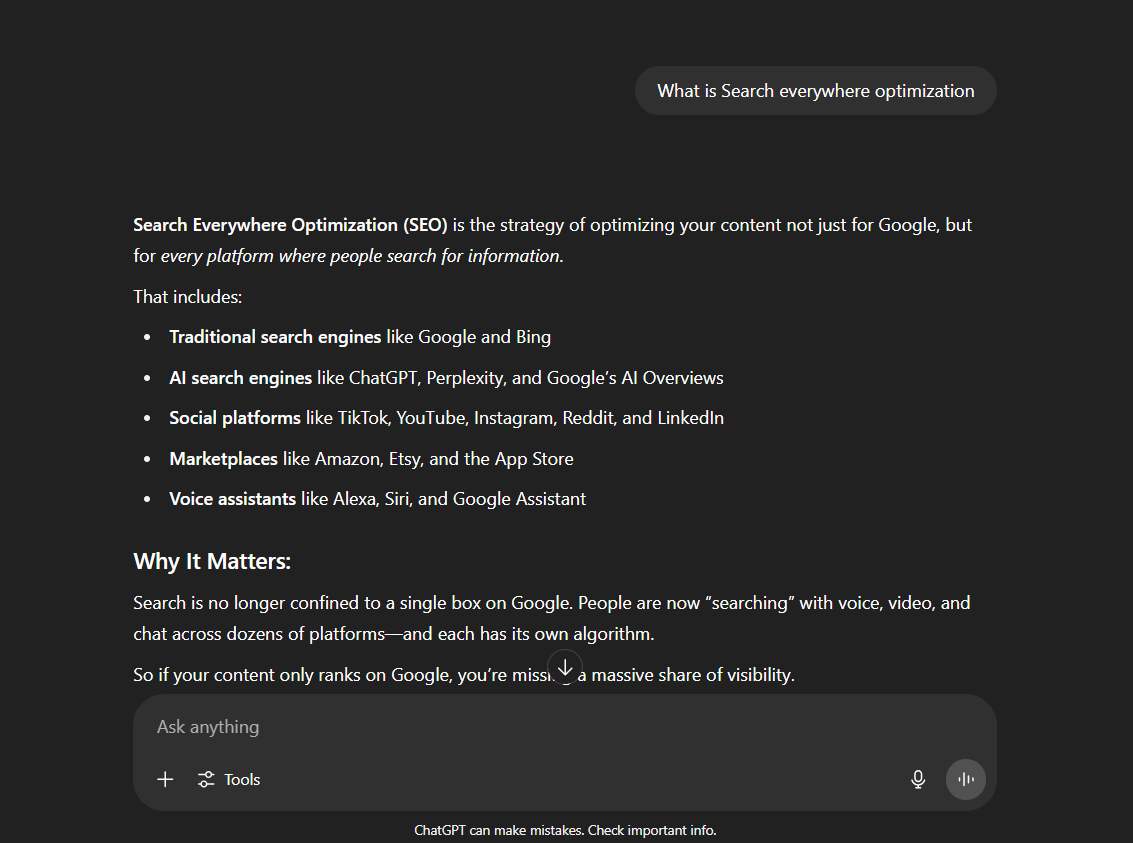
Unlike Perplexity, ChatGPT in this mode doesn’t display citations, highlighting how citation behavior varies between AI tools and affects SEO visibility.
SGE tends to cite selectively, highlighting only the sources it considers most trustworthy or relevant.
That means your optimization strategy must match the tool.
The more the AI engine depends on external citations, the more opportunities you have to get featured through strong content.
The less it cites, the more you need to build topical authority so your brand gets baked into the training data or referenced in AI logic.
To win in AI search, you need to understand how each engine’s AI features work and tailor your content accordingly.
Perplexity AI Optimization Tips
Perplexity is one of the most “SEO-visible” AI engines because it actively credits sources and embeds live links.
To get cited, your content needs to answer questions directly and with authority.
Keep these tips in mind when optimizing for Perplexity AI:
- Align your content to real user queries. Use natural language, structure answers near the top of each section, and write like you’re replying to a real question. Perplexity processes content in chunks, not like a human reading top to bottom, so every heading, subheading, and paragraph must stand alone as a complete, answer-ready unit. Use headings that mirror common natural language queries, like “What is…” or “How does…”, then follow up with a clear, factual response.
- Keep the format simple. Paragraphs should be short and focused. Include FAQ sections, bolded summaries, and clean subheadings that signal structure. Use schema markup, especially for FAQ, HowTo, and Article, so Perplexity can easily parse and prioritize your answers.
- Optimize visual content. Perplexity sometimes shows images, charts, and even embedded videos from your site. If you create unique visuals and add descriptive alt text, you increase the chances that Perplexity pulls them into its response. A diagram or chart in your post might not only get cited but could also get featured directly in the answer.
- Ensure content is fresh. Perplexity has no fixed knowledge cutoff. It pulls current content and prefers recently updated sources. To stay competitive, regularly refresh high-priority pages with new stats, examples, and updated language.
- Establish authority. Perplexity appears to prefer domain-level trust, meaning if your site is known for a topic, any of your pages might get picked. Build authority by creating a cluster of high-quality pages around your niche, internally linked and consistently maintained.
- Follow E-E-A-T best practices. Add bylines with credentials, use outbound citations, and clearly show who wrote and reviewed the content. Structured trust signals, like author schema and last updated dates, make it easier for Perplexity to choose you over a nameless blog.
- Make content skimmable. Cite your sources, add visuals, and answer queries fast. Perplexity doesn’t reward clever headlines or clickbait; it rewards clarity, credibility, and structured information.
How Google AI Overviews Affect Visibility
Google’s AI Overviews, part of its Search Generative Experience (SGE), sit at the top of the results page.
They deliver quick, AI-generated answers using content pulled from multiple web pages.
This format often pushes traditional organic links below the fold, especially on mobile.
That means even if you’re ranking well, users might not see or click on your listing.
Google’s goal is to save users time.
The AI overview pulls key insights, summarizes them in plain English, and sometimes includes expandable sections with links to dig deeper.
For SEOs, this creates a new challenge.
You’re no longer competing just for rank; you’re competing to be quoted in the answer itself.
When your site is cited in a Google snapshot, you gain visibility and authority.
But if you’re not included, even a top-three position might underperform.
To stay visible, you need to optimize with AI selection in mind.
That means strong E-E-A-T signals, structured content, and tight answers that map to common user questions.
You also need to monitor how your target queries appear.
If Google’s AI is showing a snapshot, look at what it’s quoting.
Then, reverse engineer: Are they using concise phrasing? Clear definitions? FAQ schema?
Your job is to become the source the AI can’t ignore, so even if clicks drop, your authority rises.
Structured Data and Topical Authority
To win in AI search, two things matter most: structured data and topical authority.
- Structured data helps AI engines understand your content with precision. Using schema markup, like FAQ, HowTo, Article, or Product, tells search engines exactly what your page includes. It’s how you speak the machine-readable language that AIs depend on. Google’s AI Overviews, for example, often pull from structured content to build their summaries. A page with well-tagged instructions or FAQs has a better chance of being parsed, understood, and cited correctly. This applies to everything from recipes to pricing to article metadata. Even author and date schema boost trust, signalling fresh, credible, human-made content.
- Topical authority matters a lot because AI engines prefer to cite sites with depth in a subject, not one-off pages on random topics. That means you need to build clusters of content around your niche—pillar pages, plus in-depth subtopics, all interlinked. If your site has five articles about EV charging, one on battery lifespan and another on charging station networks, AI will see you as an authority in electric vehicles. The more you cover a topic from multiple angles, the more likely you are to become a go-to source for answers.
External signals matter, too.
Getting cited by credible third-party sites, like news outlets or academic references, helps reinforce your expertise.
Even appearing in structured knowledge databases like Wikidata, Crunchbase, or industry directories makes you more recognizable to AI systems.
It’s about being visible in the wider knowledge graph, not just the SERPs.
Together, structured data and topical authority form the backbone of AI-era SEO.
They make your content easier to discover, easier to understand, and more likely to be trusted.
Optimizing for AI Search Engines: A Step-by-Step Framework
AI search optimization starts with an LLM-first mindset.
You’re not just writing for users or Google anymore, you’re writing for language models that scan, summarize, and cite.
Start by researching how users ask questions in natural language.
Use tools like Perplexity or ChatGPT to surface conversational queries around your topic.
These aren’t short-tail keywords—they’re full questions like “What’s the best time to start marathon training at 40?”
Make a list of these long-form questions and group them by topic.
Then, audit your content.
If your site doesn’t have clear answers to those queries, you’re invisible in AI-driven search.
Create content that directly answers each question clearly and quickly.
Write each section like it’s a self-contained snippet the AI could lift out and use.
Use subheadings that mirror user questions and follow them with concise, factual responses.
Every heading and paragraph should function like a mini-FAQ.
This helps both AI systems and users quickly understand what your page is about.
Then, tighten your formatting.
Use short paragraphs, bolded takeaways, and straightforward explanations that a model can parse in chunks.
Think like an AI: if a bot grabs just one sentence from your page, will it make sense on its own?
Structure your site for machine readability.
Add schema where appropriate; FAQ, HowTo, Article, Product, and Author are all helpful.
Make sure the metadata is clear and descriptive.
Use internal links to connect related pages and show topical depth.
Also, check your robots.txt and crawling permissions.
Don’t accidentally block AI bots like GPTBot or Anthropic’s Claude crawler unless you have a strategic reason.
You want your content to be accessible to the tools that surface in AI results.
Next, monitor results and refine them.
Track referral traffic from domains like perplexity.ai or bing.com/chat.
Use tools, alerts, and manual testing to see if your content is cited in AI responses.
If you’re not getting picked up, find out who is.
Are they answering more directly? Using structured data? Posting fresher content?
Learn from those wins and optimize accordingly.
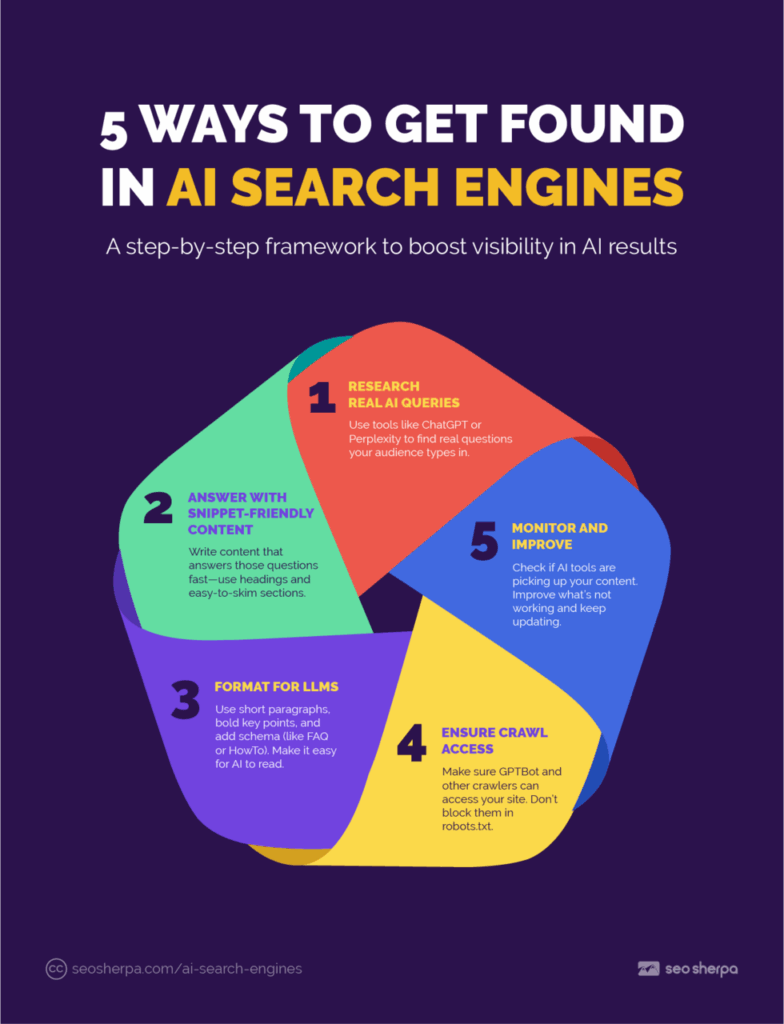
Finally, treat this process like classic SEO, only faster and more iterative.
Update pages. Fill content gaps, reformat weak sections.
AI optimization isn’t a checklist.
It’s a cycle: research →, write →, monitor →, improve.
How to Track and Measure AI Visibility
Tracking AI visibility requires a different mindset from traditional SEO.
Clicks and rankings still matter, but they no longer tell the whole story.
When an AI engine cites your content, users may never click through.
They might read your insight, get the answer, and move on, all without visiting your site.
That’s why visibility in AI results is about influence, not just traffic.
To start, monitor referral traffic from known AI sources.
Perplexity, for example, shows up in analytics as perplexity.ai.
If users click on your citation, you’ll see it.
Check which pages get those clicks and what queries they map to.
That’s your first signal that you’re being featured in AI answers.
But not all visibility results in a visit.
So look for proxy signals, too, like increases in direct traffic, branded search volume, or social mentions tied to your content.
If people see your brand in AI-generated answers, they may later Google your name directly.
You can also use qualitative feedback.
Ask your audience: “Did you discover us through ChatGPT, Perplexity, or another AI search tool?”
Sometimes, anecdotal insights are the best clues in a data-light landscape.
Manual checks still matter.
Search your target queries in AI search engines like Perplexity, Bing Chat, and Google SGE.
Look for mentions, citations, or summaries of your content even when no link is given.
Note which competitors are getting featured and reverse-engineer why.
Some SEO tools are starting to track AI visibility, but most data is still in the early stages.
Until those mature, combine referral logs, brand search trends, and hands-on research.
Eventually, Google may add AI overview metrics to the Search Console.
Until then, treat AI citations as part of your SEO reporting.
They might not show up in your GA dashboard, but they show up in your brand awareness.
Your goal is to be the voice behind the answer.
The Future of SEO in an AI-Driven Search Landscape
AI search is reshaping SEO from the ground up.
It’s not just changing where your content appears, it’s changing how it’s found, interpreted, and surfaced.
In the future, LLM-first content strategy will be the norm.
That means writing for both humans and AI models, with structure, clarity, and context baked in from the start.
Content will need to anticipate follow-up questions, define terms, and use formatting that AI can easily parse.
You’re no longer just ranking for queries; you’re answering them in the voice of the AI assistant.
Technical SEO will matter more, not less.
Clean HTML, structured data, crawlable pages, and semantic markup will be the foundation of AI-readability.
The more machine-friendly your site, the better chance it has of being quoted, cited, or summarized.
Brand authority will also become central.
AI models act like curators; they prefer to pull answers from trusted, widely referenced sources.
Being cited in news outlets, academic publications, or structured data sets will carry more weight than just page-level rankings.
So, thought leadership is an SEO strategy.
You won’t just aim for traffic, you’ll aim for visibility within conversations.
If an AI mentions your brand during an answer, even without a click, that’s a win.
Metrics will also shift.
We’ll still measure traffic, but we’ll also track citations, impressions, and downstream effects like brand search lift and engagement.
One’s influence will matter as much as one’s position.
The goal isn’t just to appear in traditional search engines, it’s to be the answer a user hears, sees, or reads when AI speaks.
This is where Search Everywhere Optimization becomes essential.
You’re not just optimizing for Google search anymore.
You’re optimizing for every surface where users ask questions, and AI delivers answers.
The best-prepared brands won’t just survive this shift; they’ll lead it.
Ready to Dive Deeper?
Download our step-by-step guide and master the tactics that keep you visible across every AI-powered search platform.


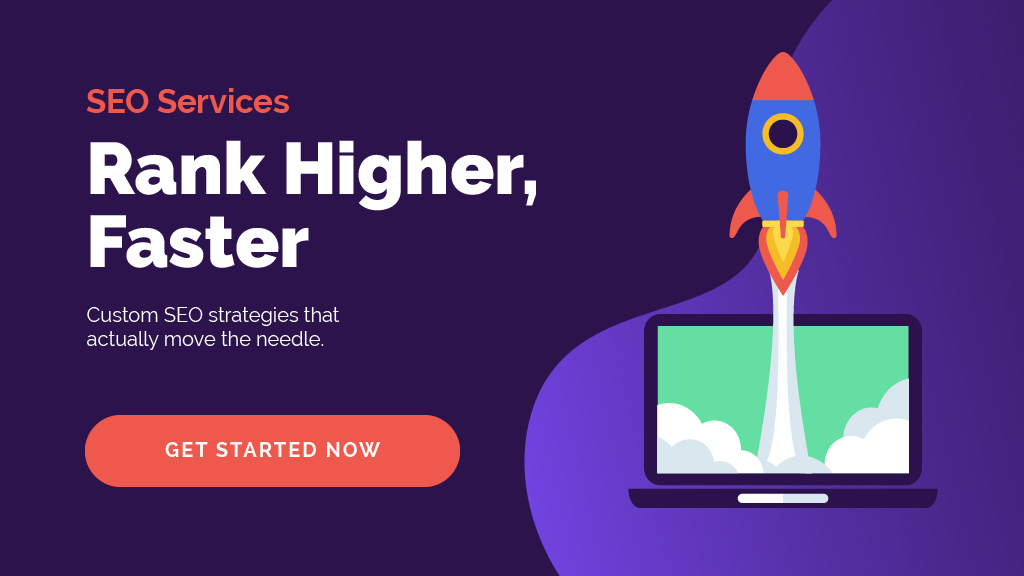


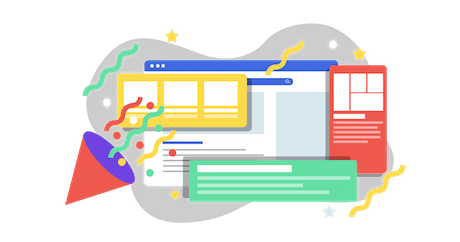
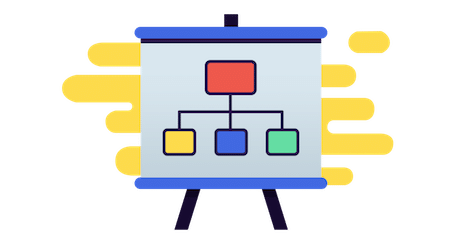
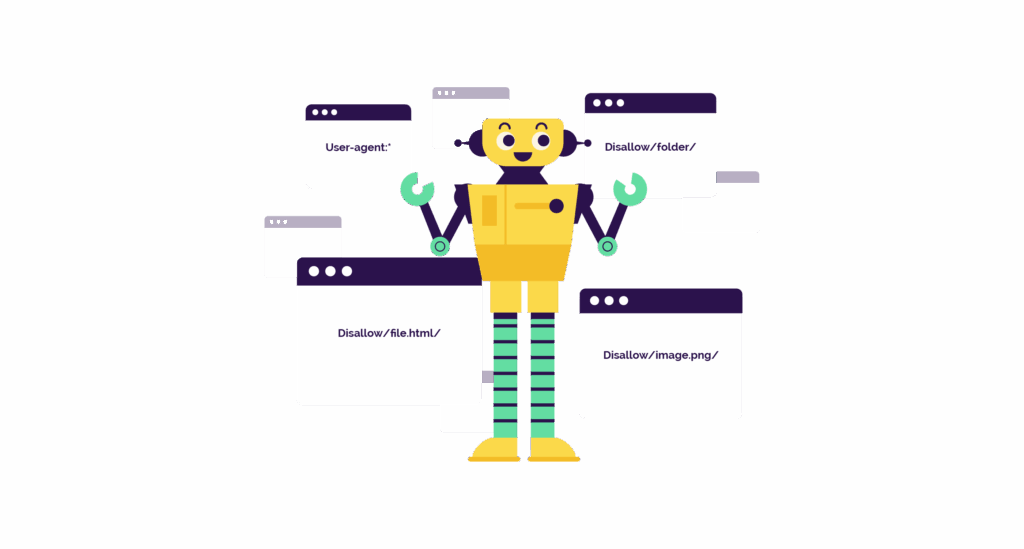

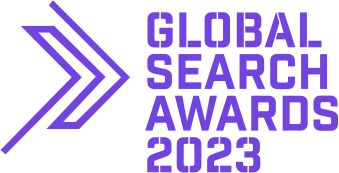


Leave a Reply